Camp Speicher massacre: Retracing the steps of Isis's worst-ever atrocity
Iraq Reborn: As Isis is driven out of the last few towns under its control, Patrick Cockburn visits the scene where more than 1,700 young air cadets were slaughtered by the group. More than three years later, there are still grisly tell-tale signs of what happened here
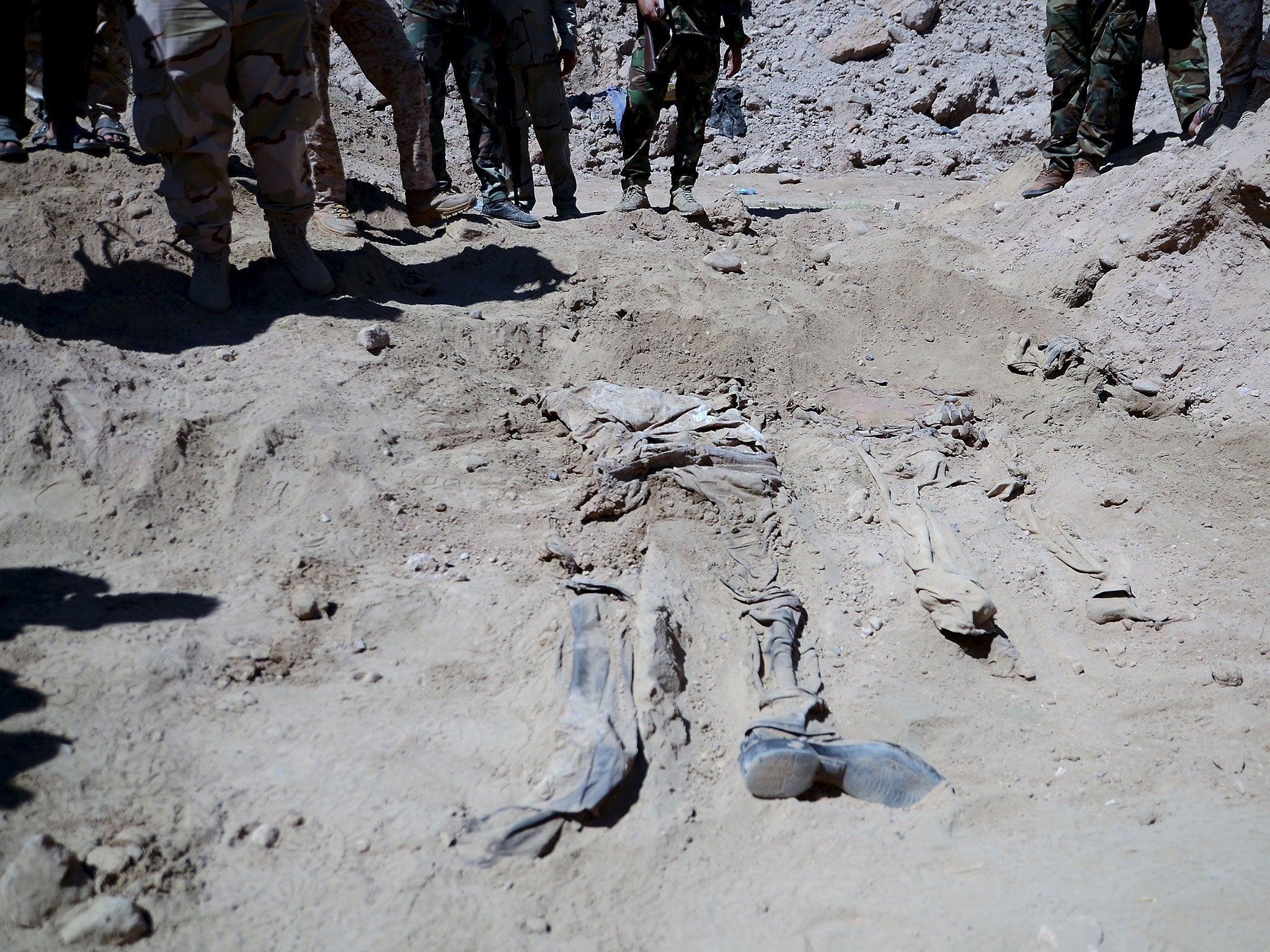
Your support helps us to tell the story
From reproductive rights to climate change to Big Tech, The Independent is on the ground when the story is developing. Whether it's investigating the financials of Elon Musk's pro-Trump PAC or producing our latest documentary, 'The A Word', which shines a light on the American women fighting for reproductive rights, we know how important it is to parse out the facts from the messaging.
At such a critical moment in US history, we need reporters on the ground. Your donation allows us to keep sending journalists to speak to both sides of the story.
The Independent is trusted by Americans across the entire political spectrum. And unlike many other quality news outlets, we choose not to lock Americans out of our reporting and analysis with paywalls. We believe quality journalism should be available to everyone, paid for by those who can afford it.
Your support makes all the difference.It is one of the most shocking of many sadistic videos shot and publicised by Isis in which its gunmen are seen executing their victims. It shows scenes from the Camp Speicher massacre on 12 June 2014 when Isis murdered 1,700 army recruits in a former palace compound of Saddam Hussein on the banks of the Tigris river near Tikrit.
Columns of terrified young men are filmed being driven at gunpoint by masked Isis gunmen dressed in black towards mass graves which the victims can see are already filled with bodies. Others are beaten as they stumble down stone steps onto a small dock under a bridge on the Tigris. As each one is dragged forward by a guard, he is shot in the head by a man with a pistol so he falls into the water. The ground where the killings are taking place is covered in blood.
It is worth forcing oneself to look at this disgusting video again as Isis is driven by Iraqi security forces out of its last strongholds in the deserts of western Iraq. The movement, now defeated and almost eliminated, revelled in its cruelty and boasted of its mass killings in order to terrorise its opponents. The Camp Speicher massacre was its worst single atrocity in Iraq or Syria.
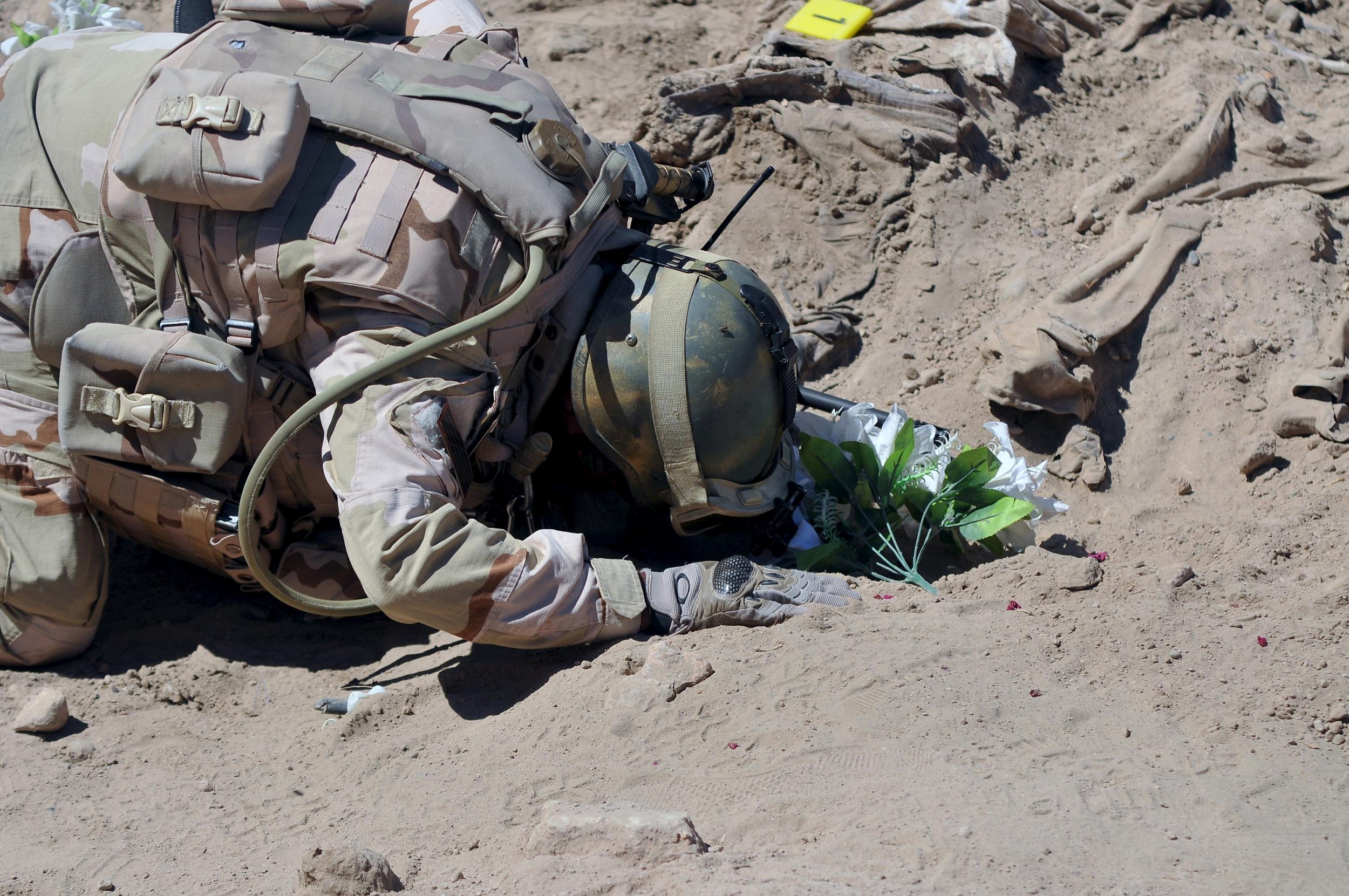
The slaughter of the young recruits happened a few days after Isis had unexpectedly captured Mosul; its militarily units were racing south towards Baghdad against little opposition as the Iraqi army disintegrated. Its gunmen were greeted by many Sunni as liberators in places like Tikrit, the city near which Saddam Hussein was born and grew up. It was here that as many as 10,000 army recruits were being trained at an air force academy. They were told to go home by their commanders who themselves fled in circumstances that still cause controversy and anger. The young men, who were from all over Iraq, changed into civilian clothes and those carrying weapons were told to leave them behind at the camp.
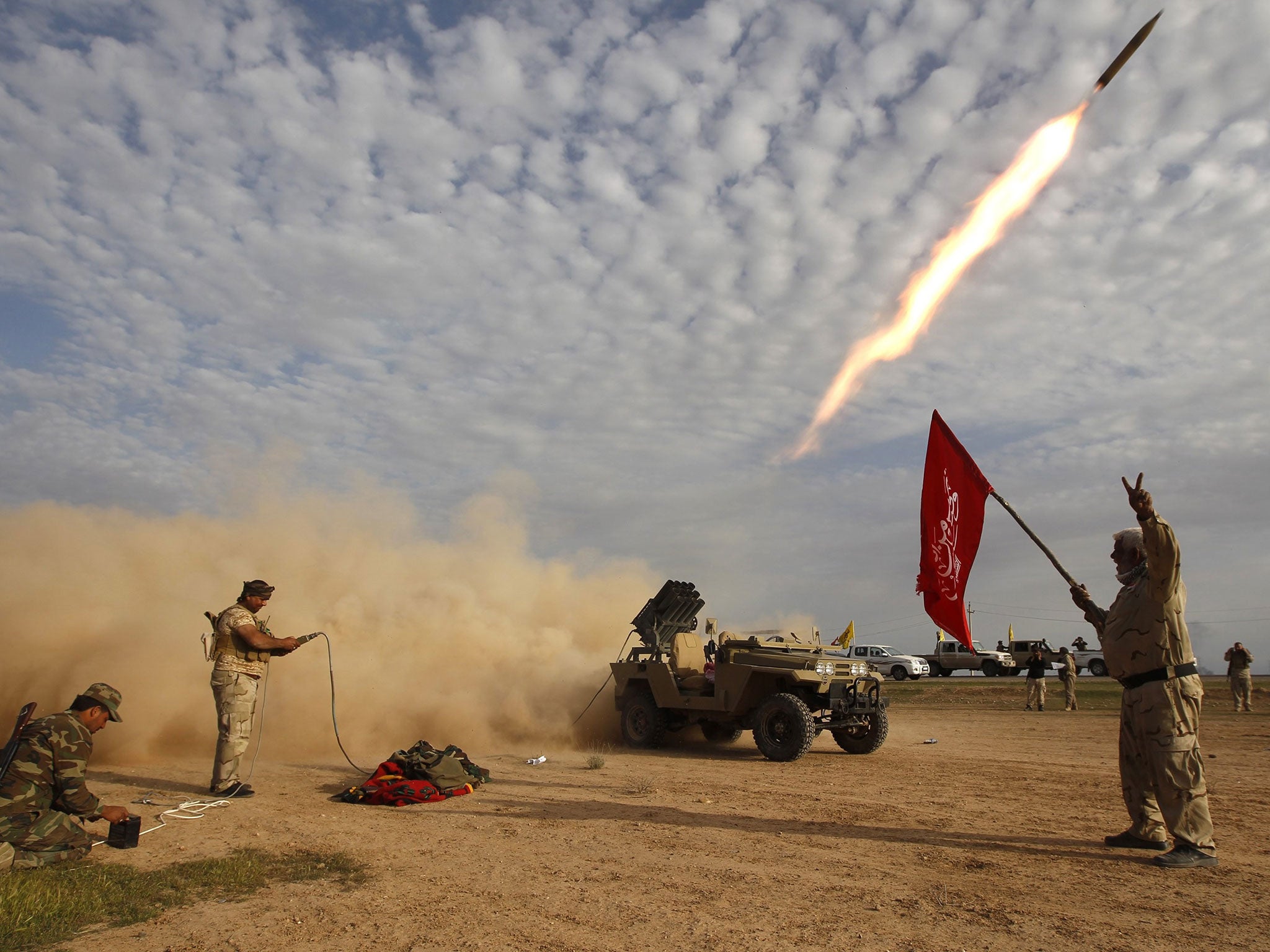
Isis gunmen captured many of the recruits as they walked along the roads heading home and divided them into Shia and Sunni before loading the Shia into trucks. It is not known when they realised they were going to die because many were told at first that they would be let go where they could get transport to Baghdad. Instead, they were taken to an area where Saddam Hussein had built several palaces where he and his family could enjoy a fine view across the Tigris. Some of the palaces were in ruins, shattered by US bombing, and the rest were abandoned.
The site of the killings may have been chosen because of its associations with Saddam Hussein. Hayder al-Baldawi, a member of a committee commemorating the massacre, says: “It was an act of revenge for the execution of Saddam and the fall of his regime. Many of the killers were identified later as coming from Tikrit, Baath party members and people from Saddam’s Albu Nasr tribe and other pro-Saddam tribes, who joined up with Isis.”
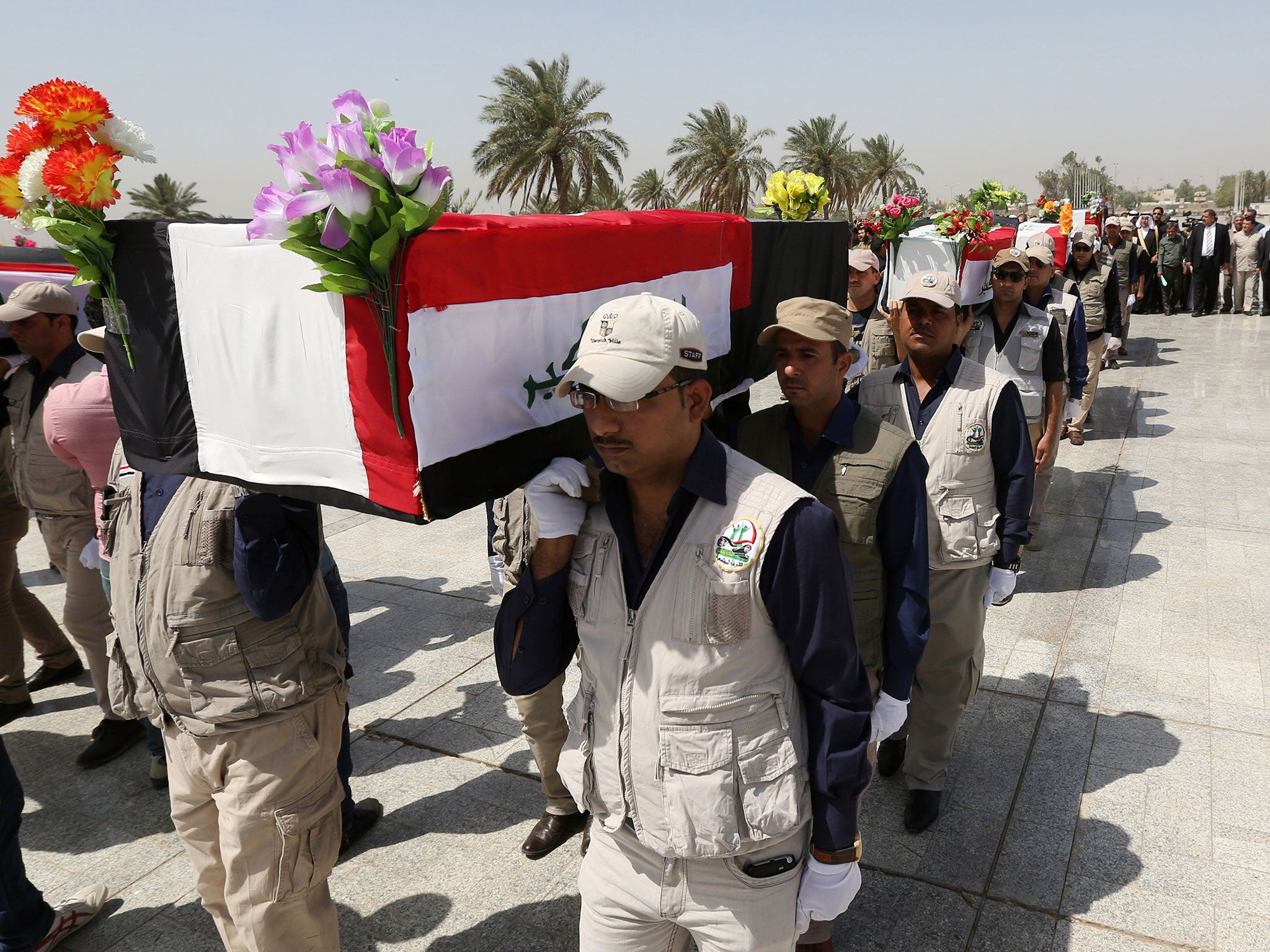
There are many massacre sites: on the flat ground by the river large pits have been excavated where the recruits were killed and their bodies covered with earth and stones. At one place, they were shot on top of a low cliff so the bodies fell in a heap on ground below. Another site is some way away, high up on a bluff overlooking the river, near Saddam Hussein’s giant ruined Salahudin palace, where today there is a stretch of rough ground and a deep hole with a tree in the middle distance on the edge of a cliff. We compared this to a still from the Isis propaganda video that shows the same tree, but the foreground is carpeted in dead bodies so numerous that one cannot see the ground. Many of the dead have their hands tied behind their backs and there is a black Isis flag in one corner of the picture.
A watchman pointed to a rock where he had just found a bit of blood-matted hair stuck to the side of a rock which he believed must date from the massacre.
It is not clear how many died: Isis claimed that it had killed 1,700, though the number of bodies so far identified is lower. Mr Baldawi says that “the Ministry of Health does not have enough money to pay for DNA kits, so bodies can be identified for certain”. He puts the number of dead at 1,935, of which 994 bodies have been found and, of these, 527 have been identified and 467 are under medical examination. In addition, some 941 are still missing, though these figures are difficult to verify because the search for the bodies only began in March 2015, eight months after the killings, when government forces recaptured Tikrit.
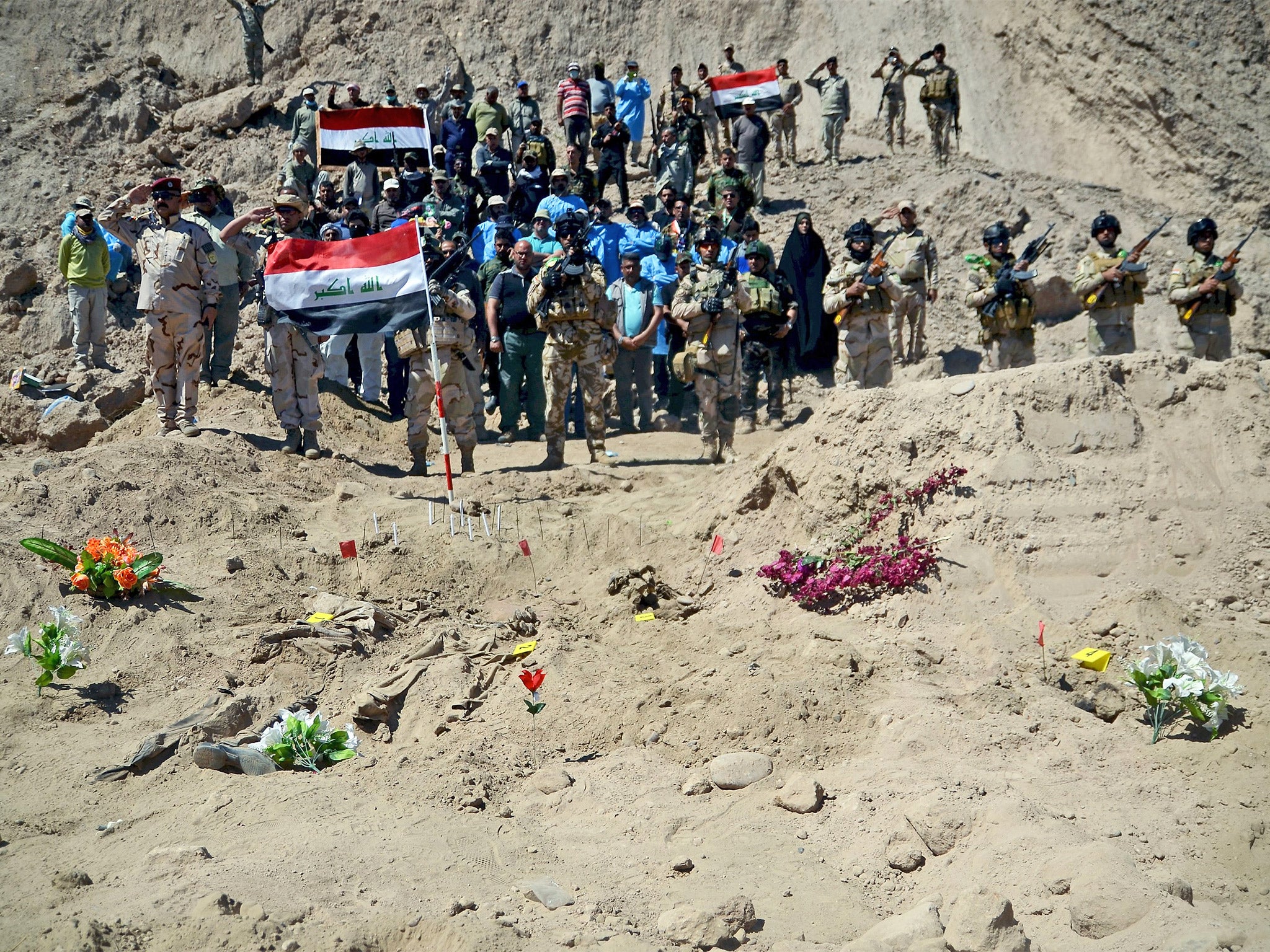
The search for the perpetrators of the massacre has gone on ever since with 36 alleged killers executed in August 2016 amid allegations that they had not received a fair trial. Defence lawyers were not able to speak to the accused and walked out. The United Nations Assistance Mission for Iraq (UNAMI) issued a negative report on the conduct of the trial, saying that there had been a “failure to investigate allegations of torture”. Nevertheless, there have been no counter-massacres and the government and NGOs have made concerted efforts to get the Tikrit Sunni tribes to reconcile with the families of the victims.
Tribal leaders said that individuals from tribes had taken part in the massacre, but denied it was a communal Sunni attack on the Shia. They said that Sunni officials from Tikrit had also been targeted and killed by Isis. Some Sunni had helped Shia escape. Reconciliation is helped because Tikrit is wholly Sunni and members of the two sects are not intermingled as they are in other parts of Iraq, where neighbourhood revenge killings have been frequent. Tikrit, with a population of 160,000, looks relaxed and suffered only limited damage during its recapture compared to other Sunni cities like Ramadi and Mosul.
Identifying who on the government side was responsible for allowing so many unarmed Shia recruits to be captured remains a divisive political issue. Victims’ families want to know who were the senior officers who ran away, leaving their sons to be murdered by Isis. This is not just an issue between Shia and Sunni, but between Shia and Kurd, relations between the latter being particularly fraught in the wake of the government reoccupation in September of Kirkuk and the disputed territories.
Nouri al-Maliki, the Prime Minister at the time of the killings, said in an interview with The Independent that he has a simple explanation for what happened: “In fact, the Speicher massacre occurred because the commander there was a Kurd and he received orders from [then-Kurdish President] Masoud Barzani to withdraw with his [Kurdish] men and they left everything in chaos and disorder and the massacre happened.”
This account has the advantage of excusing Mr Maliki and his government for any responsibility for the collapse of the Iraqi armed forces in the area which enabled Isis to slaughter so many young men.
Subscribe to Independent Premium to bookmark this article
Want to bookmark your favourite articles and stories to read or reference later? Start your Independent Premium subscription today.
Join our commenting forum
Join thought-provoking conversations, follow other Independent readers and see their replies
Comments